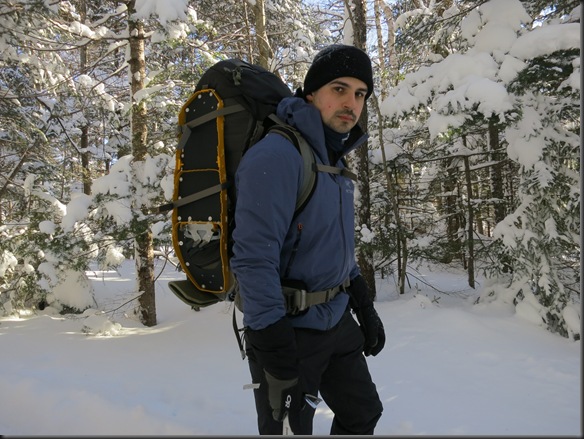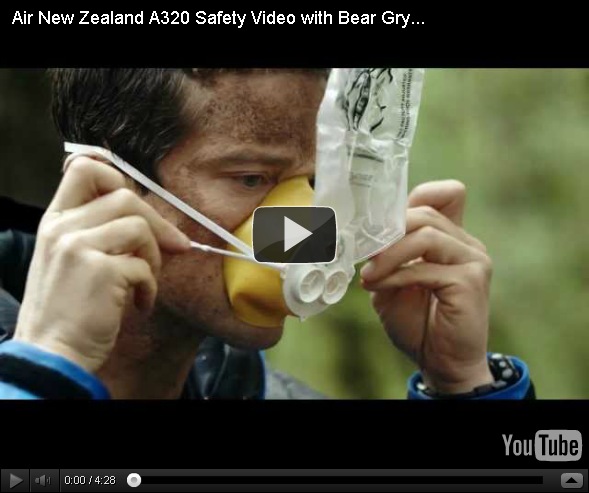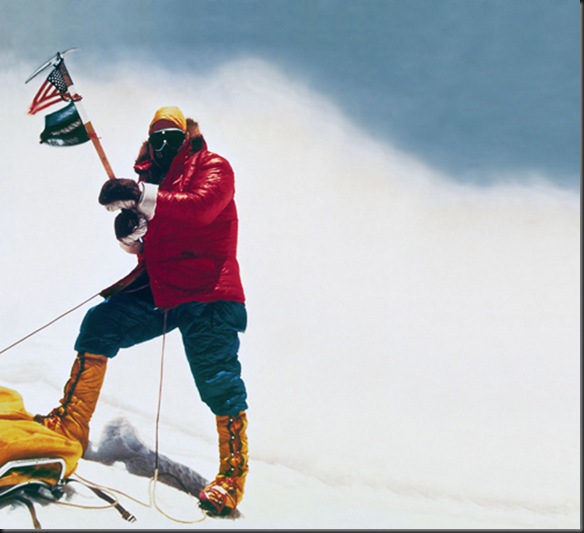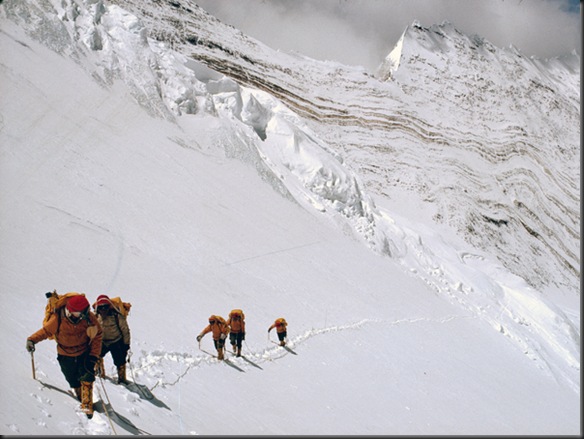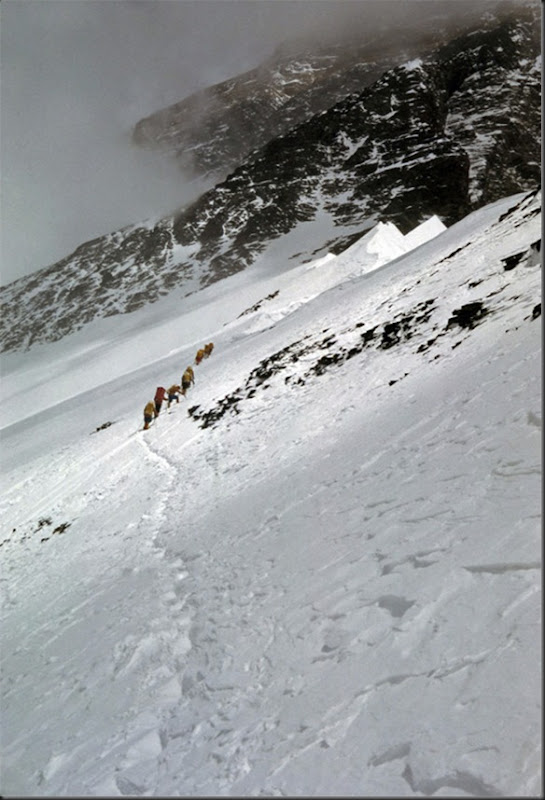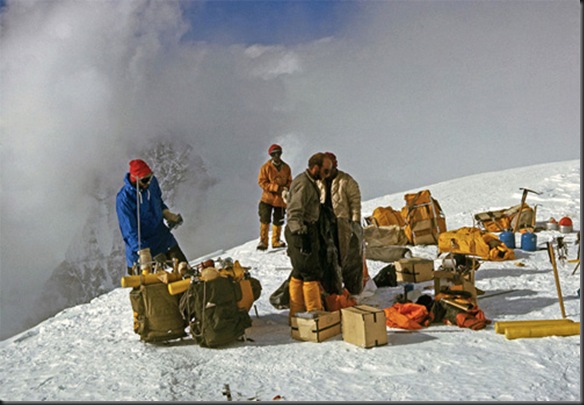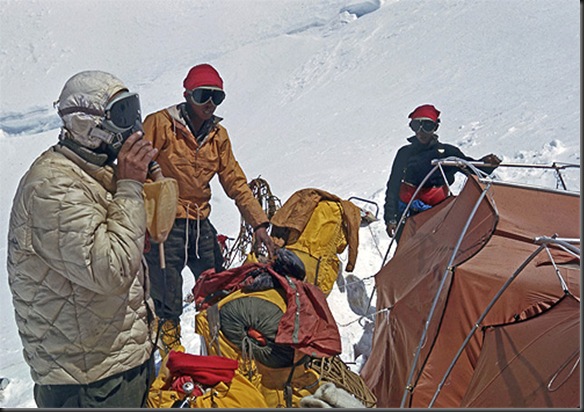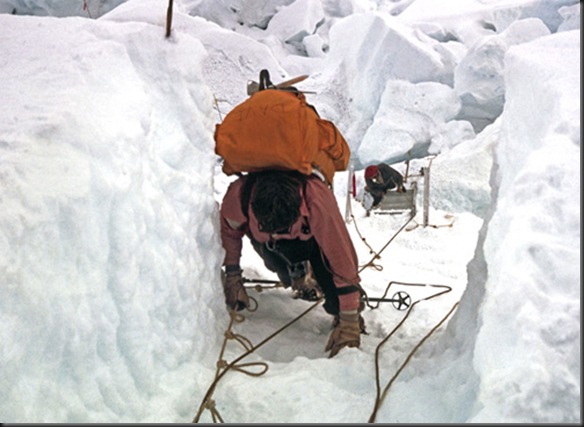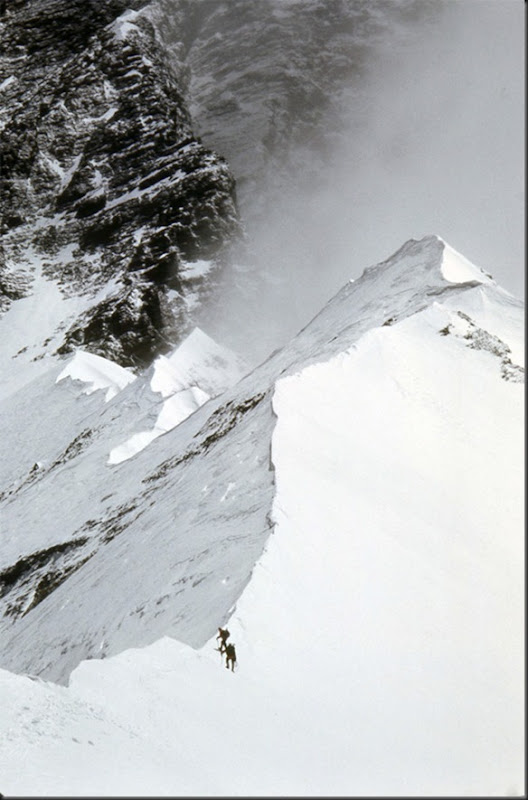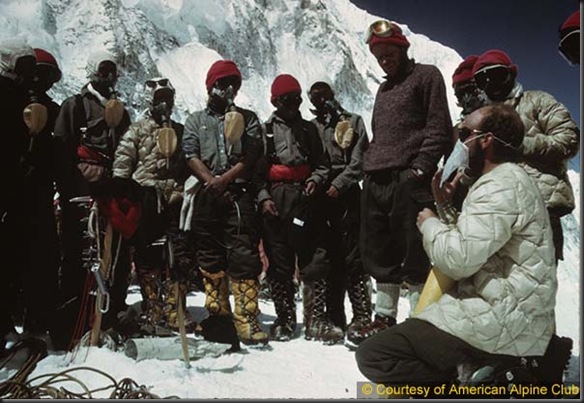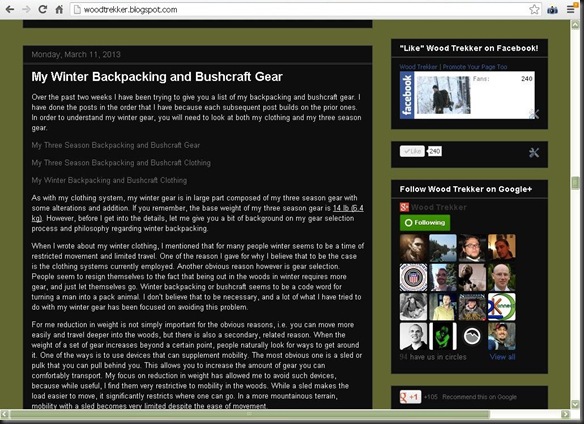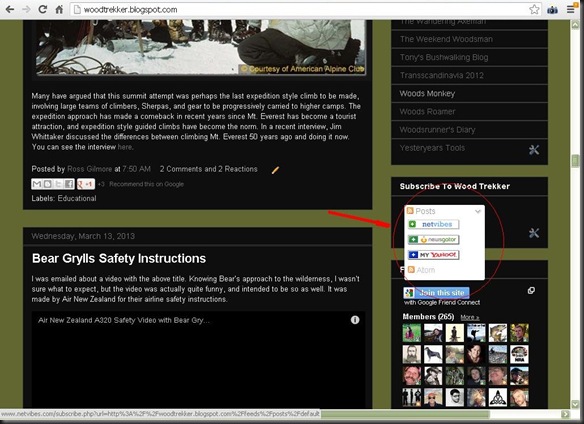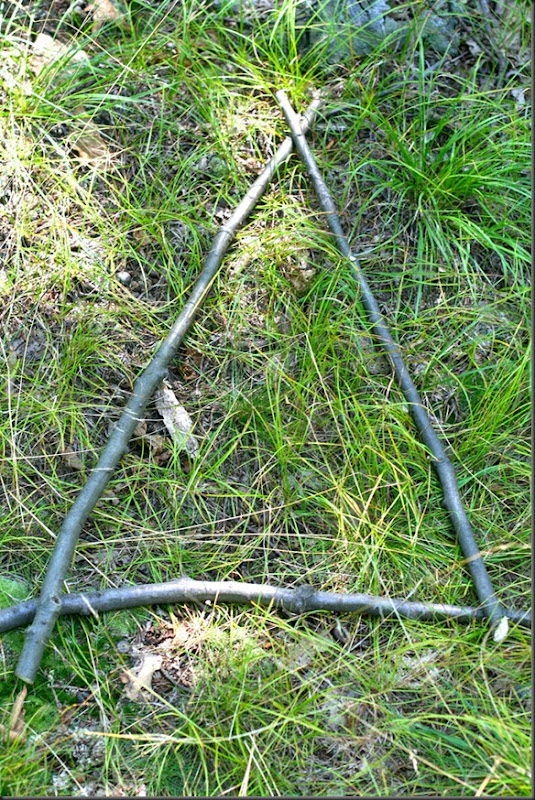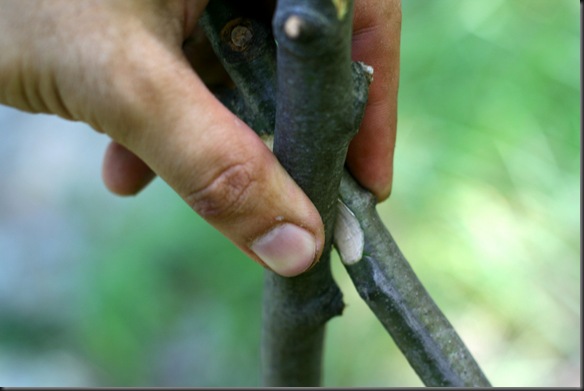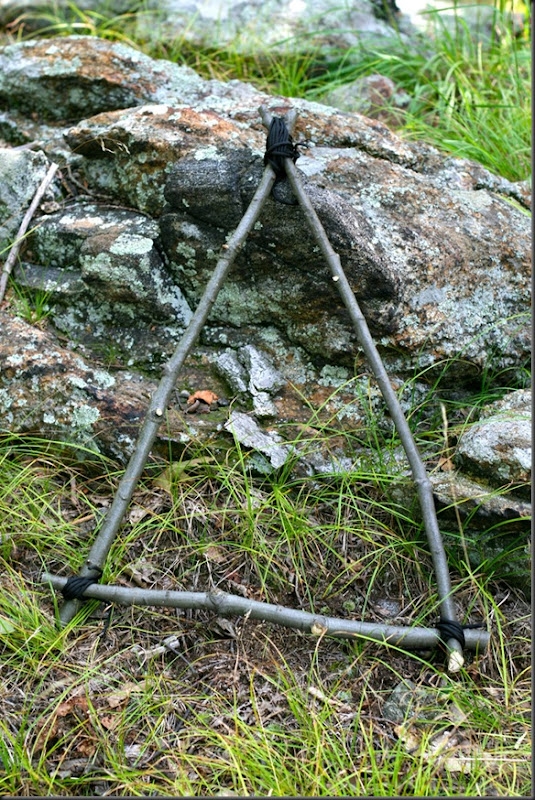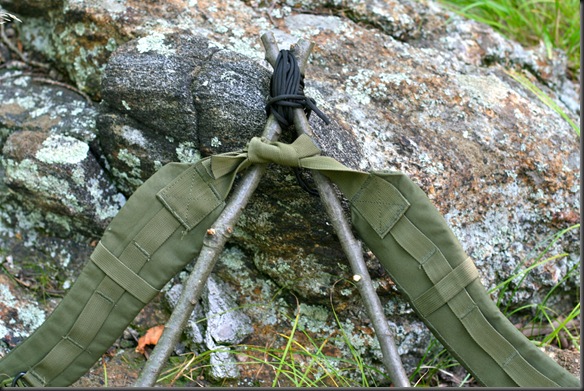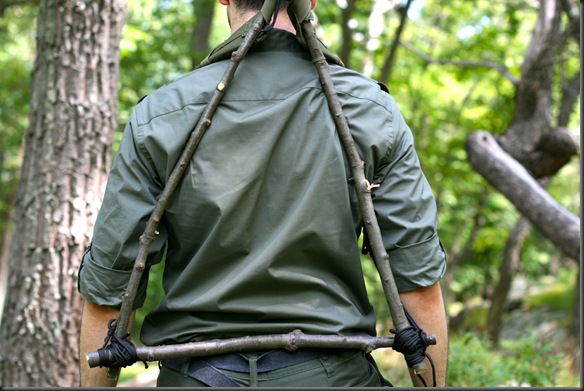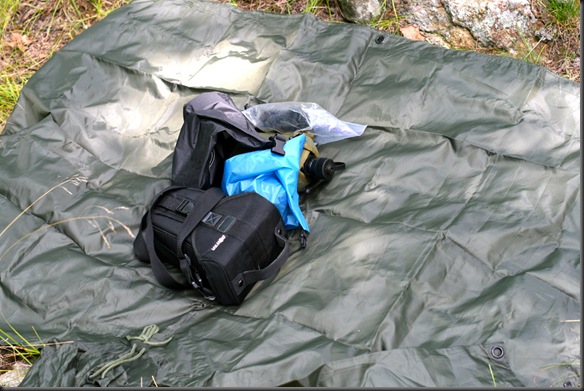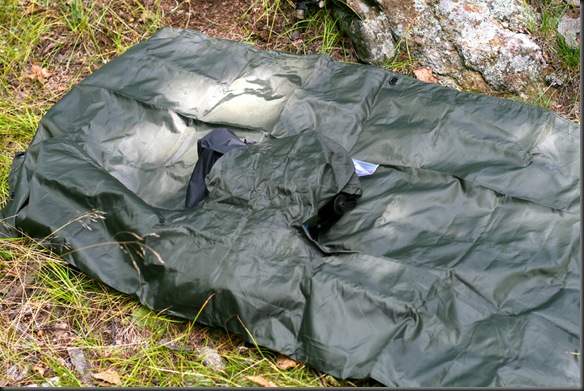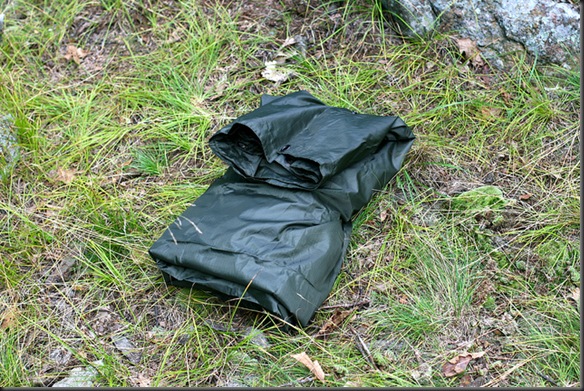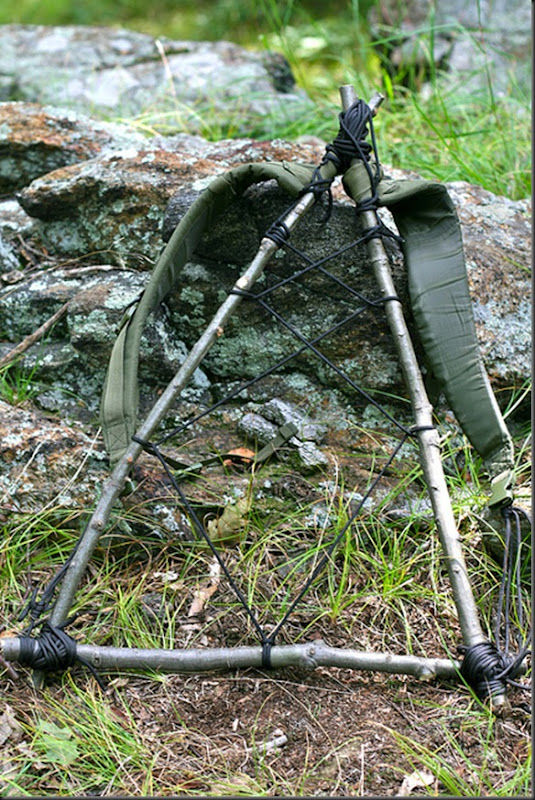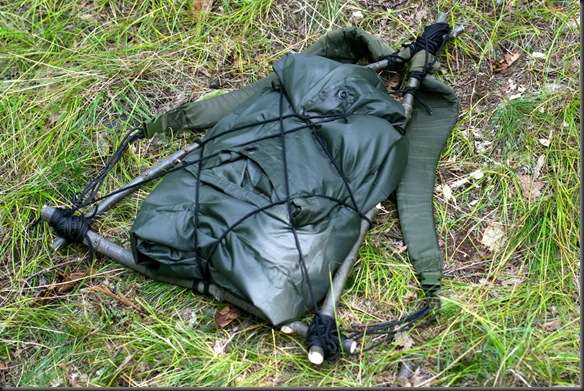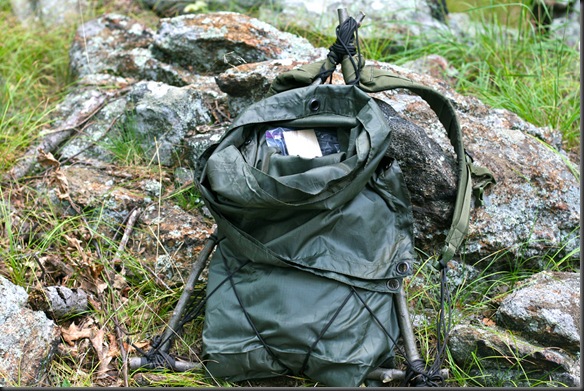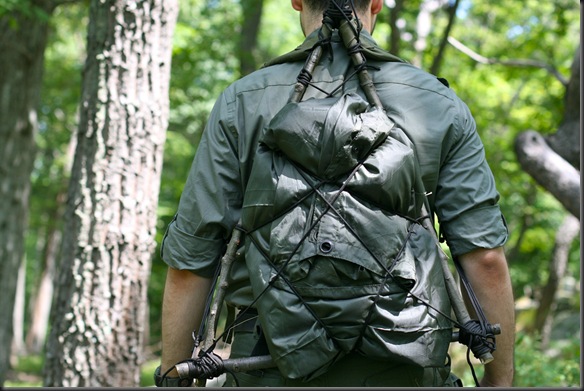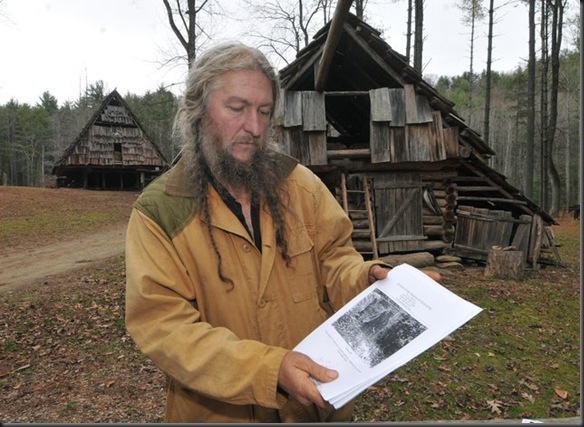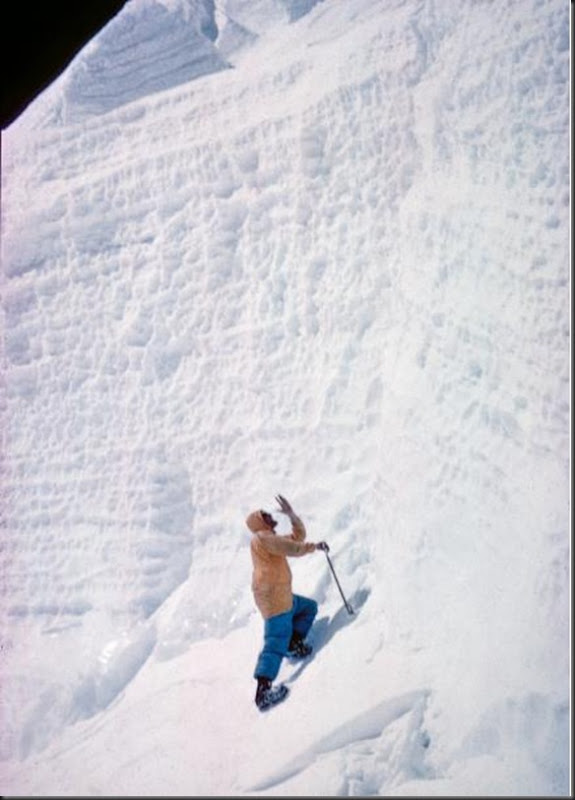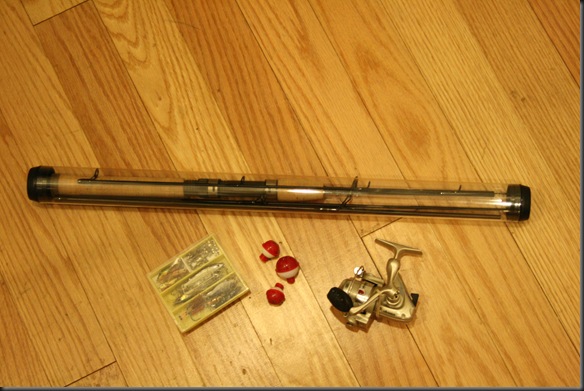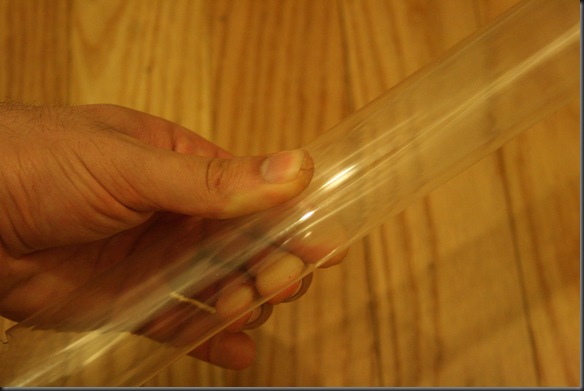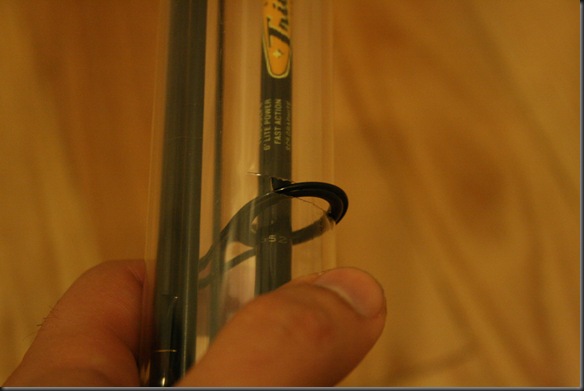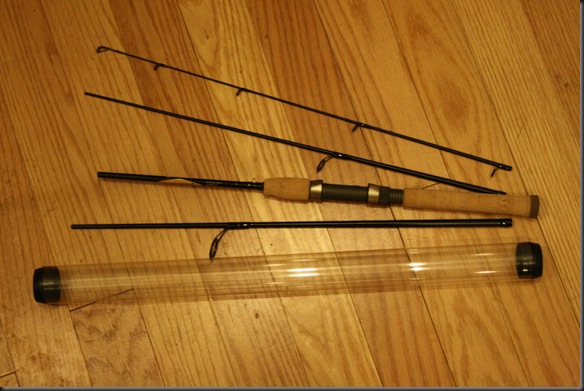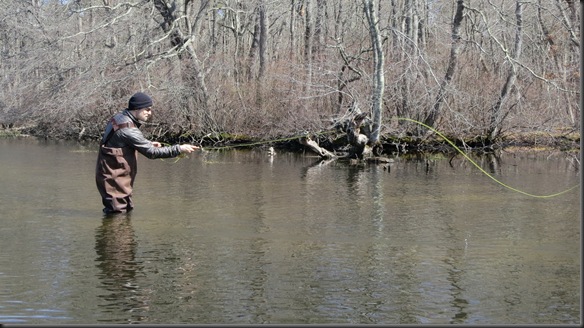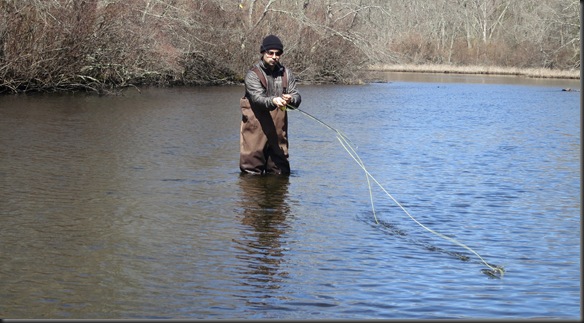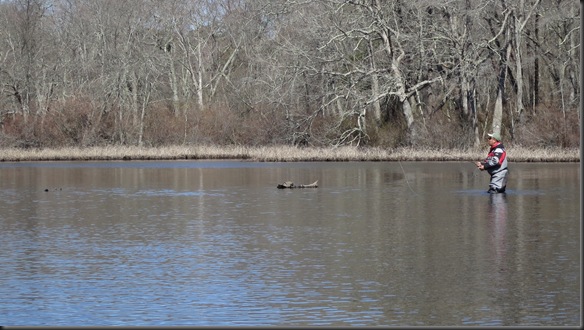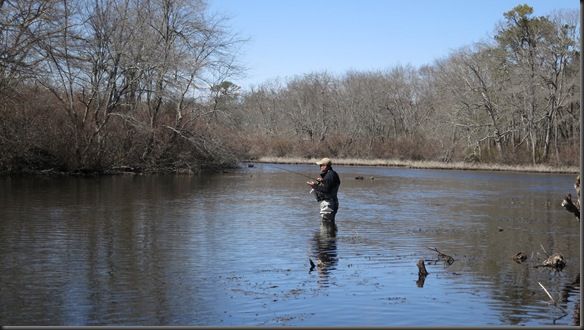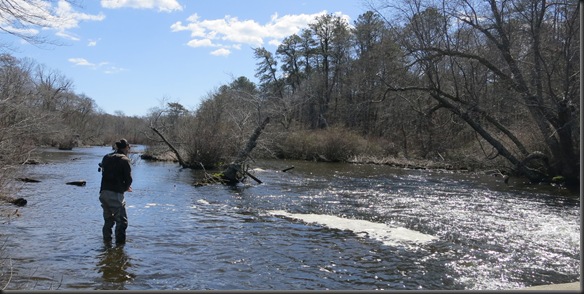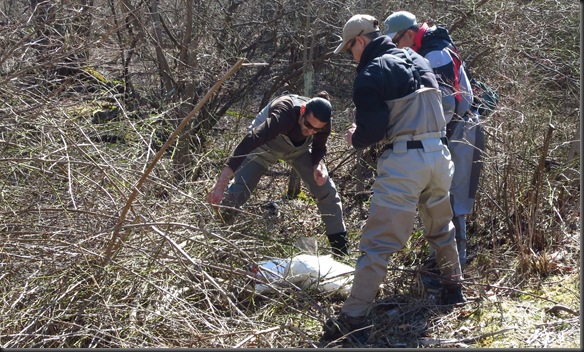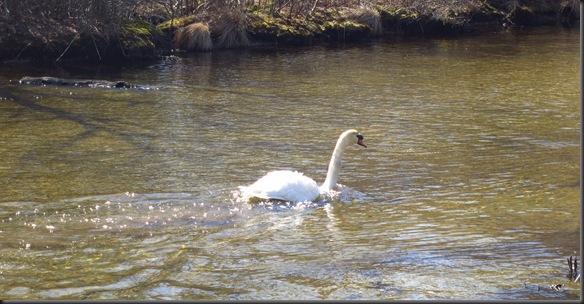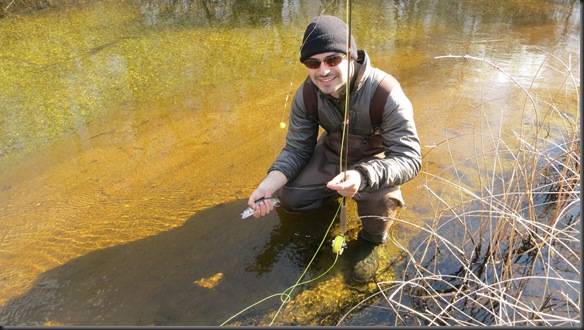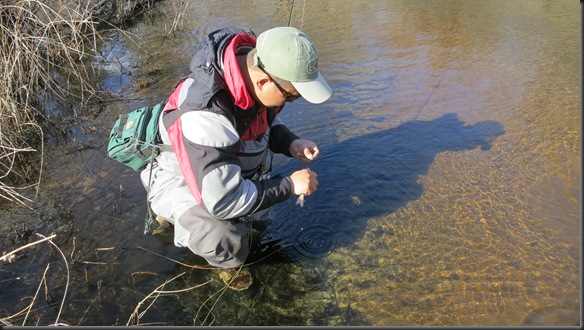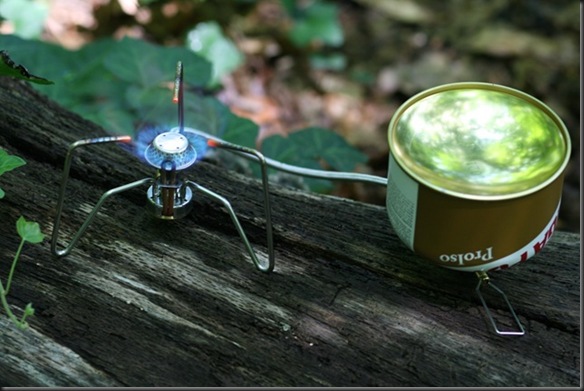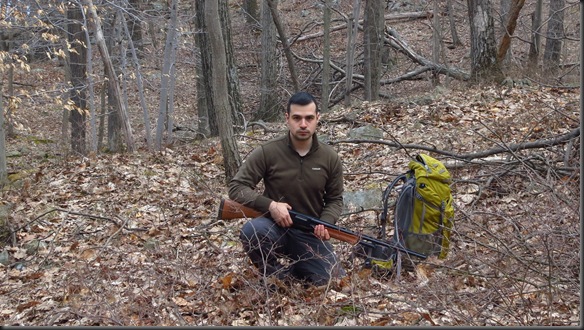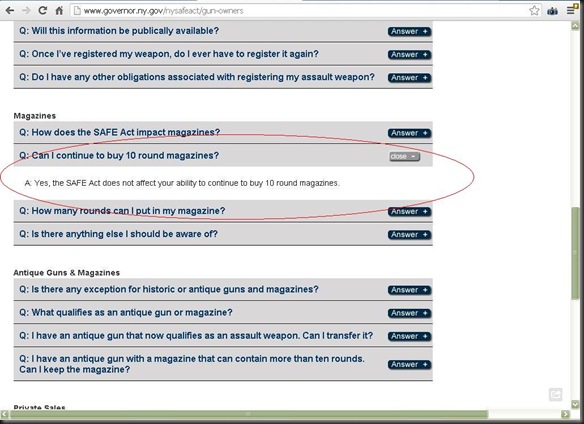Over the past two weeks I have been trying to give you a list of my backpacking and bushcraft gear. I have done the posts in the order that I have because each subsequent post builds on the prior ones. In order to understand my winter gear, you will need to look at both my clothing and my three season gear.
My Three Season Backpacking and Bushcraft Gear
My Three Season Backpacking and Bushcraft Clothing
My Winter Backpacking and Bushcraft Clothing
As with my clothing system, my winter gear is in large part composed of my three season gear with some alterations and addition. If you remember, the base weight of my three season gear is 14 lb (6.4 kg). However, before I get into the details, let me give you a bit of background on my gear selection process and philosophy regarding winter backpacking.
When I wrote about my winter clothing, I mentioned that for many people winter seems to be a time of restricted movement and limited travel. One of the reason I gave for why I believe that to be the case is the clothing systems currently employed. Another obvious reason however is gear selection. People seem to resign themselves to the fact that being out in the woods in winter requires more gear, and just let themselves go. Winter backpacking or bushcraft seems to be a code word for turning a man into a pack animal. I don’t believe that to be necessary, and a lot of what I have tried to do with my winter gear has been focused on avoiding this problem.
For me reduction in weight is not simply important for the obvious reasons, i.e. you can move more easily and travel deeper into the woods, but there is also a secondary, related reason. When the weight of a set of gear increases beyond a certain point, people naturally look for ways to get around it. One of the ways is to use devices that can supplement mobility. The most obvious one is a sled or pulk that you can pull behind you. This allows you to increase the amount of gear you can comfortably transport. My focus on reduction in weight has allowed me to avoid such devices, because while useful, I find them very restrictive to mobility in the woods. While a sled makes the load easier to move, it significantly restricts where one can go. In a more mountainous terrain, mobility with a sled becomes very limited despite the ease of movement.
For similar reasons, I have stayed away from skis. While they are a great tool in certain types of terrain, and a very skilled skier can use them effectively in many ways, ultimately, they limit where one can go. Having to backpack with skis strapped to a pack is something I never want to repeat.
So, to summarize my approach, just as with my clothing, my gear is centered on mobility. I want to be able to go wherever I want in the woods, whenever I want, and for as long as a chose. My gear is centered around allowing me to do that. Now, on to specifics:
Temperature from 32F (0C) to 0F (-18C)
As with my winter clothing, my winter gear is divided into two groups. The first set of gear is designed for temperatures from 32F (0C) to 0F (-18C).
![017 017]()
The gear that I use for this temperature range is nearly identical to that used for my three season backpacking with one change, and one permanent addition. To that I add some other items depending on the terrain I am likely to encounter. All of the gear is carried in the same pack, the REI Flash 62 that I use for my three seasons backpacking.
To begin with, please take a look at my three season gear here if you have not already done so. The one change that I make is to replace my MSS warm weather Patrol 32F (0C) sleeping bag with the Western Mountaineering Antelope MF sleeping bag. It is rated to 0F (-18C) and weighs 2 lb 7 oz. It is filled with premium 850 goose down and has a micro fiber shell. The shell is water resistant and light, but not as tough as those made out of Gore Tex. As you can see, the Western Mountaineering Antelope MF weighs only 1.7 oz more than my synthetic warm weather bag, and it interestingly compresses down to the same size. That is the reason why I can still use my three season pack for most of my winter backpacking.
The one permanent addition I make to my three season gear to convert it to winter backpacking in addition to the substitution of the sleeping bag is to add the Patagonia DAS Parka. I store it in the front floating pocket where it gives me easy access. If you have not read my post on winter clothing, you can do so here. It would make a lot more sense. The DAS Parka weighs 1 lb 13 oz.
I also usually bring a piece of closed cell foam pad to sit on. It weighs 2 oz.
And that’s pretty much it when it comes to converting my three season gear to winter use for temperatures down to 0F (-18C). I replace the sleeping bag with a warmer one, and I add a jacket. Everything else stays the same. The total base weight of my gear with this set up increases to 16 lb 0.7 oz (7.2 kg). That is the set up I carried on my last trip to Echo Lake. You can read about it here. It will be sufficient for most winter outings in temperatures down to 0F (-18C).
![1103 1103]()
Now, under certain conditions, I may need to add some extra items to facilitate mobility. I may bring one, all, or none of these items depending on the terrain I am about to encounter.
The first item is my snowshoes. As I mentioned earlier, I do not like skis because I find they limit where I can go. I have had much greater luck with snowshoes, and my love for them has increased exponentially since I got a good pair. The snowshoes I use are the 25 inch MSR Lightning Ascent. MSR’s Ascent series are designed for backwoods travel. They have multiple straps in case some of them get damaged, and they have fairly aggressive crampons built into the frame which allow for travel over steep terrain. They also lock the shoe in very well so there is no lateral movement. Compared to regular strap bindings, this greatly reduces snowshoe overlap. The pair of snowshoes weighs 3 lb 15 oz. They are heavy, but worth their weight in gold when you hit deep snow.
![190 190]()
The next item is my crampons. I have two different sets that I use depending on the conditions. I don’t always need or carry crampons, but when heading to elevation, or expecting icy terrain, they are a must. A few years back I dislocated my shoulder in the woods because I didn’t have my crampons. I try not to make the same mistake again.
If I am expecting just light crampon use, I bring the Hillsound Trail Crampon Pro. These are what I would call approach crampons. They have relatively mild spikes, flexible frames, and universal attachments that can fit them onto just about any regular backpacking boot. They will not work well with very soft boots like PAK boots. The pair weighs 1 lb 7.9 oz. There are lighter options like microspikes, but I like the more aggressive crampons, and the anti-balling plates, which prevent snow accumulation on the bottom of the crampons.
![231 231]()
When serious crampon work is needed, I pull out my rigid boots, and my full crampons. I use the Black Diamond Sabertooth Pro crampons. They are fully automatic and require that the boots be designed to work with such crampons. They are a general mountaineering crampon with horizontal front spikes, instead of vertical ones for ice climbing, although they perform very well in that role as well. I have been very happy with them. The pair weigh 2 lb 1 oz. Either set of crampons requires a crampon bag (at least I require it), which I made myself. It weight 6 oz.
![034 034]()
And of course, when I use crampons I need my ice axe. I currently use a 60 cm Black Diamond Raven Pro as my general mountaineering axe. I have been making some modifications to it this winter, but I’ll leave that for another post. The ice axe weight 15 oz.
![044 044]()
Now, this is definitely everything. The only other items are clothing that may come in and out of the pack depending on conditions. You can see my posts on clothing for the details. In the weight calculations here, I am including the weight of the DAS Parka in the pack weight because it stays there for most of the time and certainly when I am moving. Assuming that I am carrying all of the additional gear; snowshoes, the heavier Black Diamond set of crampons, and the ice axe, the total weight of my pack for the winter gear for temperatures above 0F (-18C) is 23 lb 5.7 oz (10.5 kg). This is the gear I carried on one of my January trips this year. You can read about it here.
![1863 1863]()
Temperature below 0F (-18C)
When the temperatures drop below 0F (-18C), then some larger changes are required.
![030 030]()
Specifically, three changes occur. The first is that I once again switch to a warmer sleeping bag. I replace the Western Mountaineering Antelope MF 0F bag with the Western Mountaineering Puma MF. Just like the Antelope, the Puma has 850 premium goose down fill and a microfiber shell, however it is rated to –25F (-32C). It weighs 3 lb 7 oz and is quite a bit larger when compressed than the Antelope. I am sometimes asked why I don’t just get an extremely warm sleeping bag, something rated to –40F (-40C). The answer is that the warmer the bag is the exponentially larger it has to be. That small increase in insulation leads to a large increase in weight and volume. Using your shelter, sleeping bag and clothing together can get you into those temperatures without the added weight and volume (unless you are on Antarctica).
The second change is that I replace the Patagonia DAS Parka with the Eddie Bauer First Ascent Peak XV jacket. The jacket is much warmer, and correspondingly heavier and bulkier. It weighs 2 lb 6 oz. For more information see my post on winter clothing.
Because of these two changes, my gear now becomes too bulky to fit into my REI Flash 62 pack that you saw earlier. With the larger bulk I need to switch to a larger pack, the Gregory Palisade 80L. It is a significantly heavier pack at 6 lb 3 oz for the medium size and has a 80L volume. The added weight translates directly into comfort as it does with most Gregory packs. Even with the heavier loads, I have always been comfortable wearing it.
The only other change I may make depending on exactly how cold the weather is, is to replace the Kovea Spider stove with the MSR Whisperlite International. Together with a repair kit and a 22 oz bottle, the MSR Whisperlite weight 1 lb 7 oz. It is quite a bit heavier, but worth the weight when you have to melt a lot of snow.
![305[3] 305[3]]()
So, for this second set of gear designed for very cold weather, the total weight, assuming again, snowshoes, crampons, ice axe, jacket and the MSR Whisperlite stove replacement, is 28 lb 13.4 oz (13 kg). Now, that is quite a bit of weight. To that you have to add fuel, food and water. Even so, with two litters of water and three days of food, the weight should still be about 37 lb. It is heavy, but still quite portable over long distances and varied terrain. This is the gear I carried on my summit attempt of Mt. Washington. You can read more about it here.
![005 005]()
Of course, this last weight represent the extreme weight of my gear, with me bringing tools for every terrain I might encounter at very low temperatures. For the average person doing winter backpacking, most of that gear will not be needed. If you just look at my winter gear without crampons, snowshoes, etc, for temperatures above 0F (-18C), then the base weight would be 16 lb, 0.7 oz (7.2 kg).
I hope this has been of some use. The above represents what i would call my bushcraft and backpacking gear, which allows me to move through and stay in the woods. If I am out for more specific pursuits like fishing, hunting, or ice climbing, more items will be needed.
Edit: I forgot to mention in the post that for winter backpacking, I remove the Sawyer Squeeze filer from my gear. Filters freeze in winter and can get damaged easily. During winter I melt and boil my water from snow, or use purification tablets if I am in an area devoid of snow. Therefore, you can remove 5.0 oz from all of the weights I listed above. I also replace my collapsible Platypus bottle with a collapsible Nalgene bottle. It is the same type of folding bottle except that it has a wide mouth opening like regular Nalgene bottles. The wide mouth prevents it from freezing over as quickly as a regular Playpus bottle.
I also add a second Nalgene folding bottle as a pee bottle. Getting out of a sleeping bag at night in cold weather is not a good idea. You lose huge amounts of heat and have to spend a lot of energy afterwards to reheat the sleeping bag. So I guess, you can add the 5.0 oz back to the above weights. :)

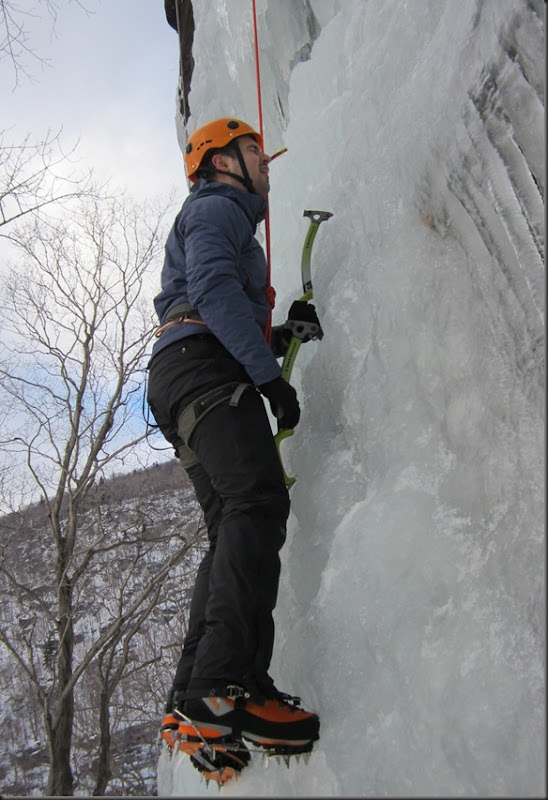
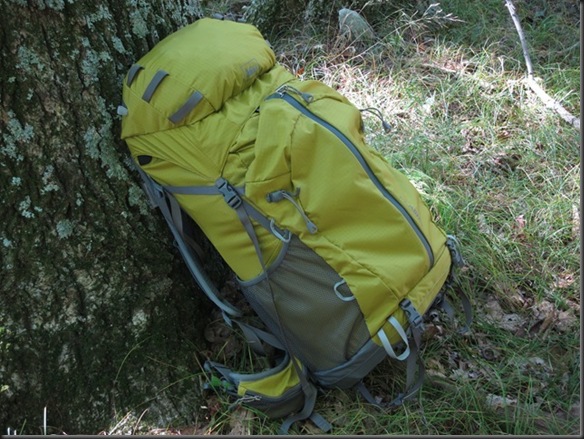
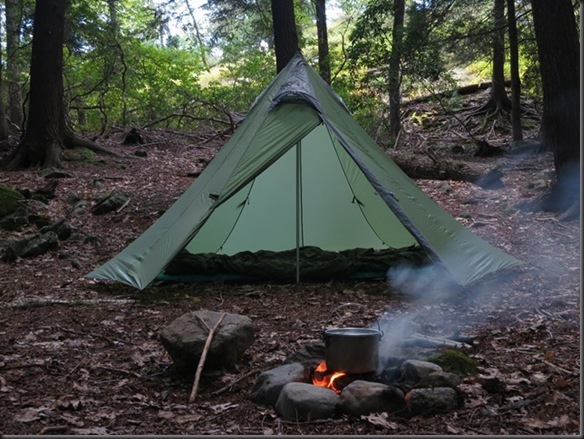
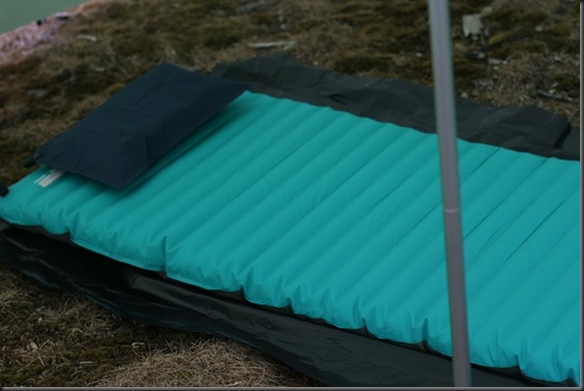
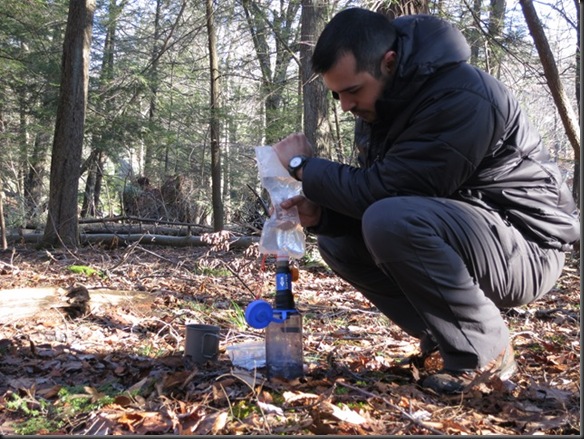
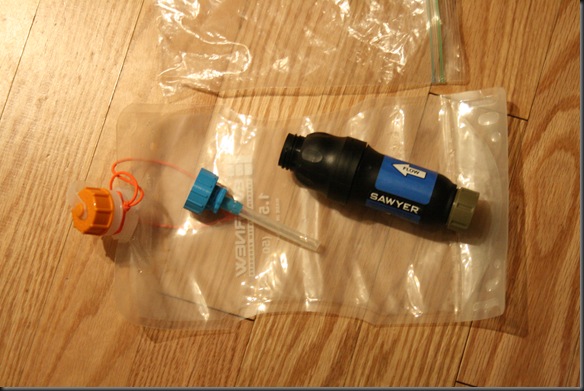
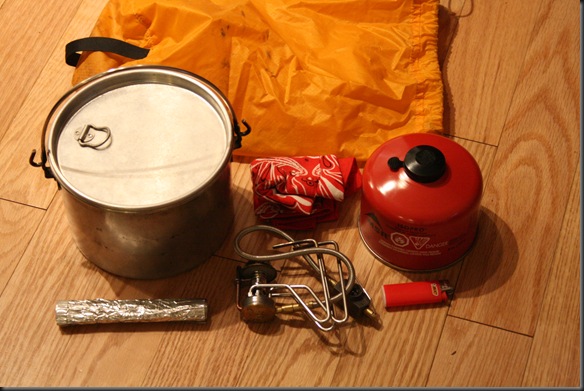
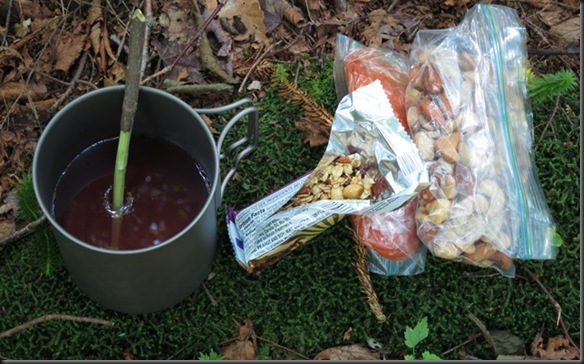
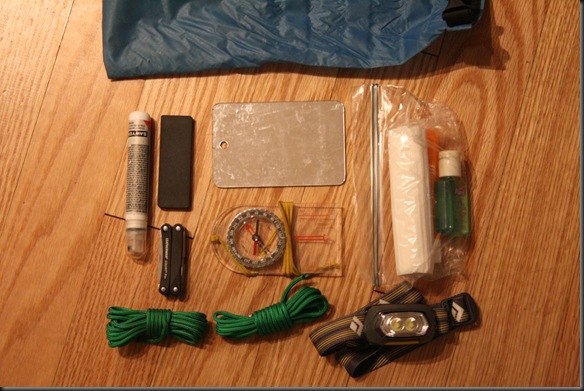
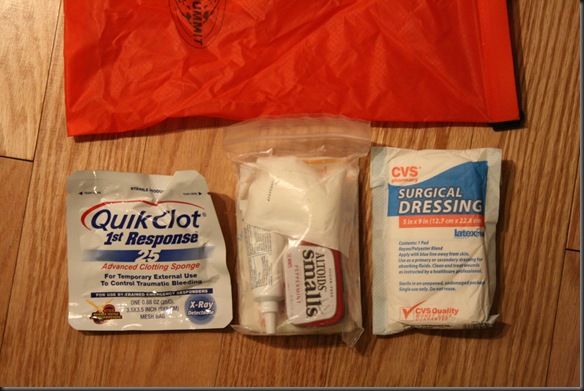

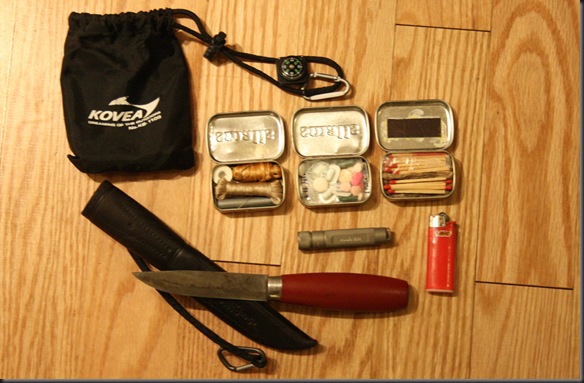



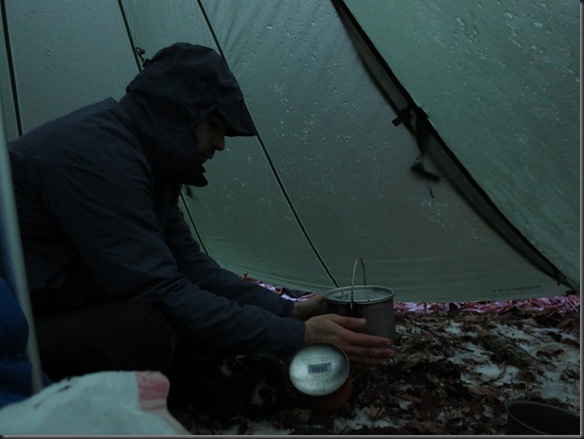
![110 - Copy[3] 110 - Copy[3]](http://lh3.ggpht.com/-e9DG9iUYiME/UStaQFlTGUI/AAAAAAAAJAw/9bodOqpCEsk/110Copy3_thumb1.jpg?imgmax=800)
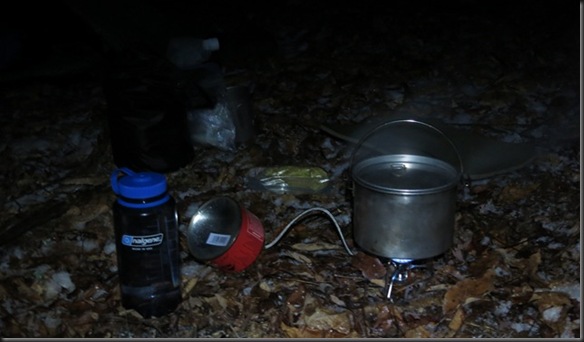
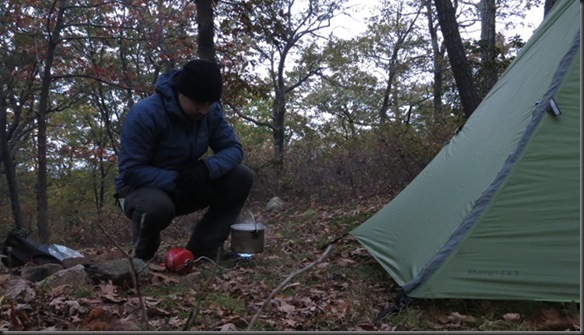
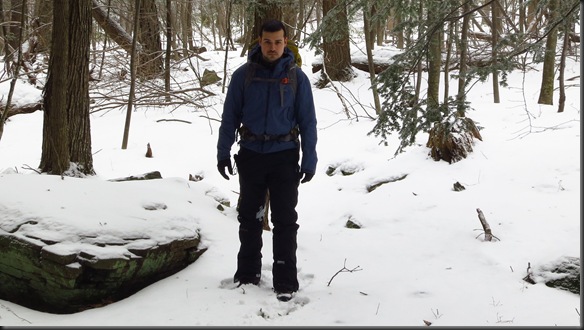
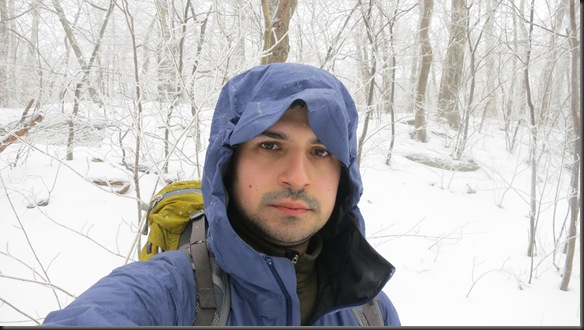
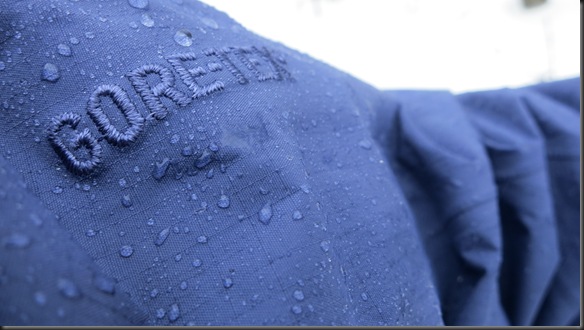
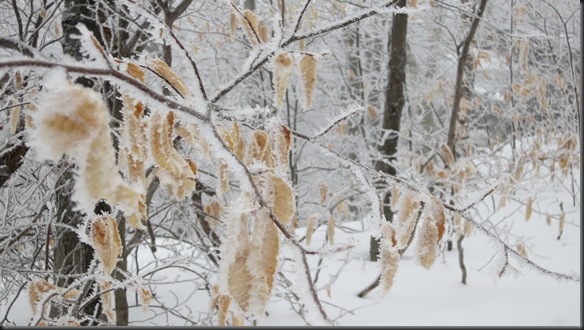
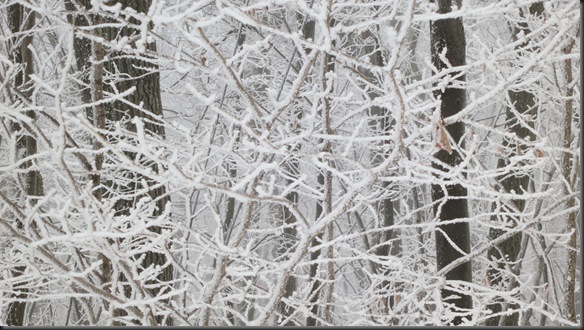
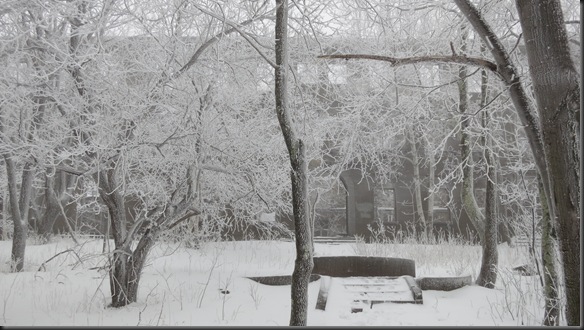


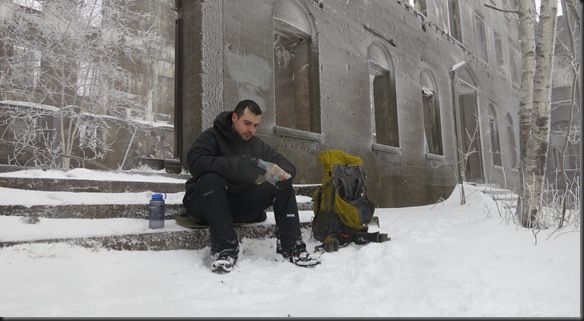
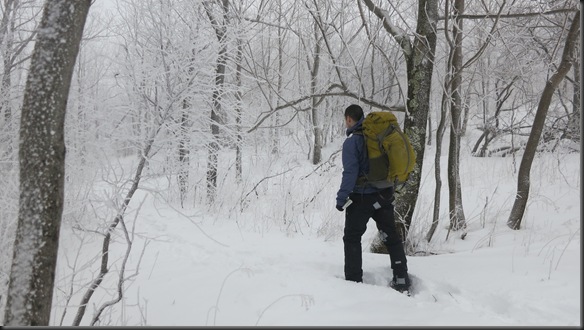
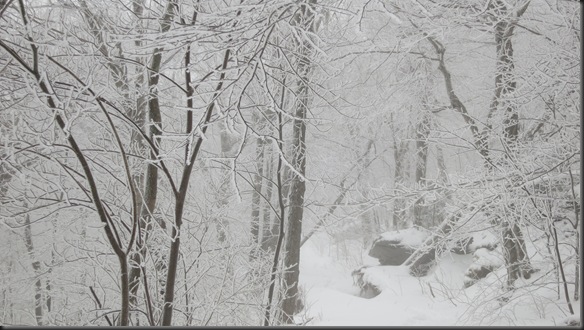
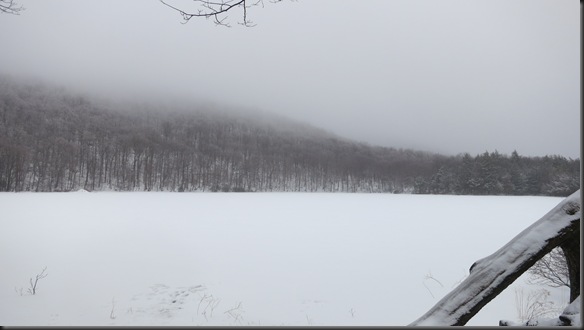
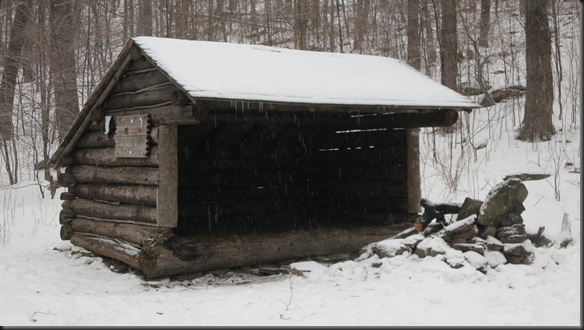
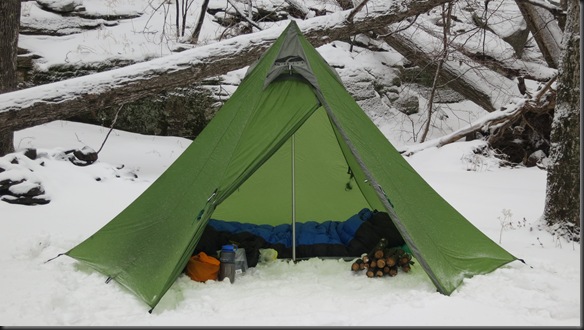
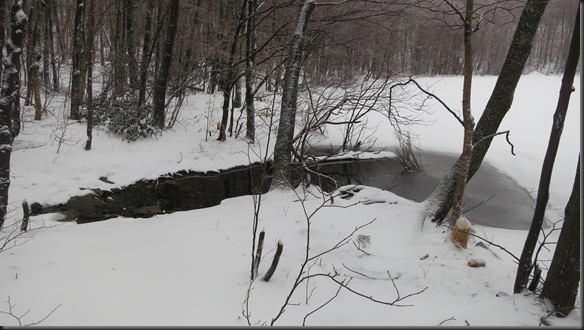
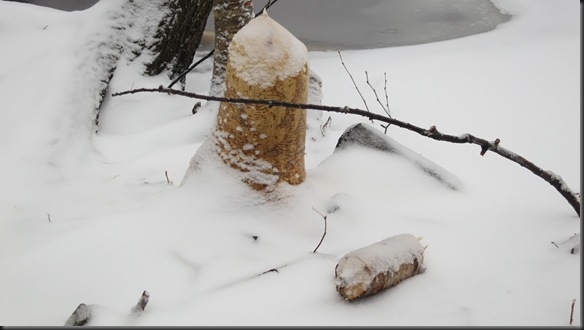
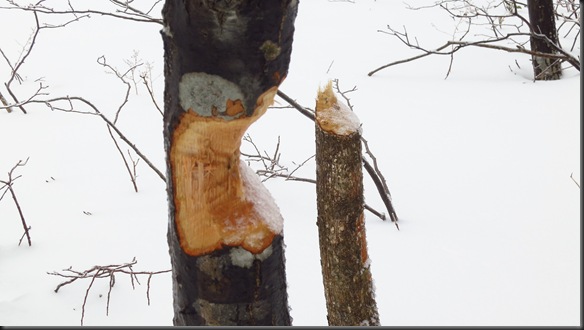
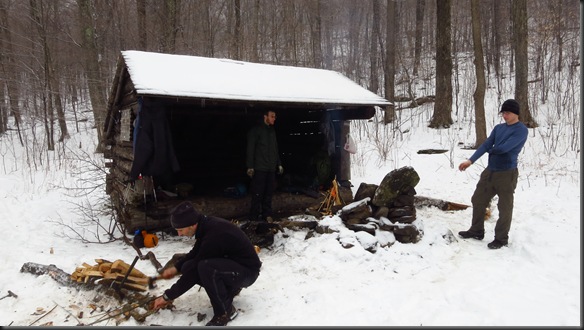
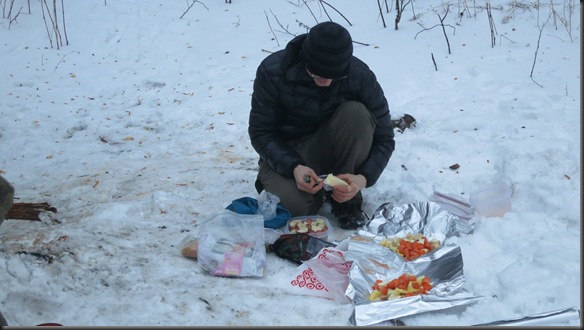
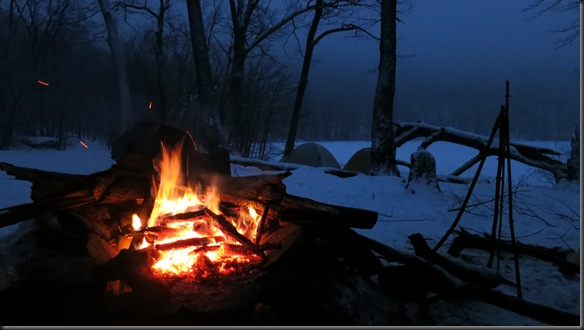
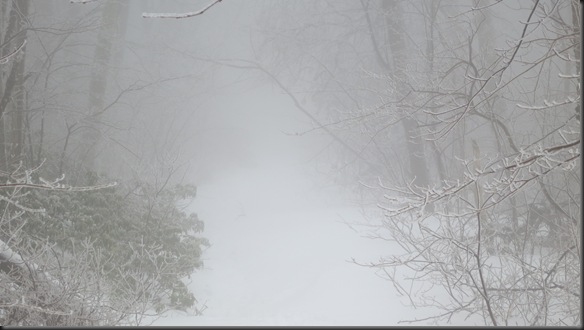
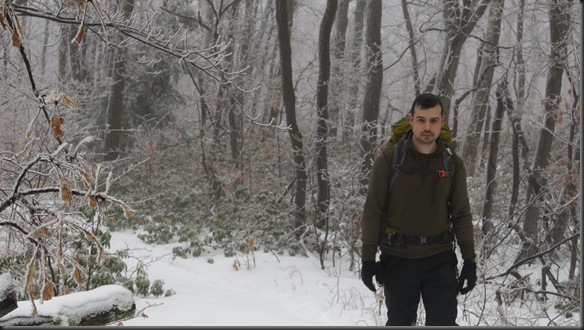

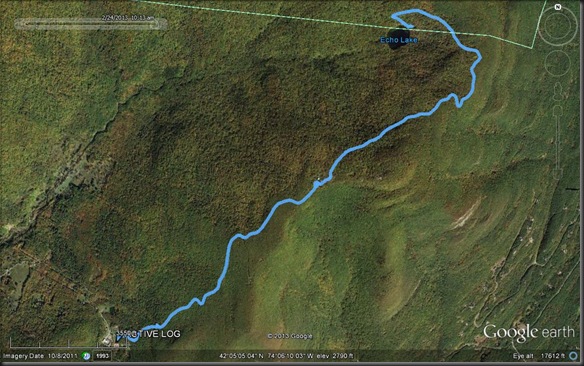

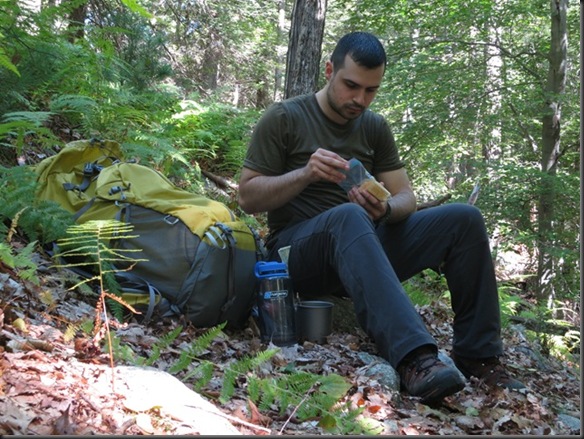

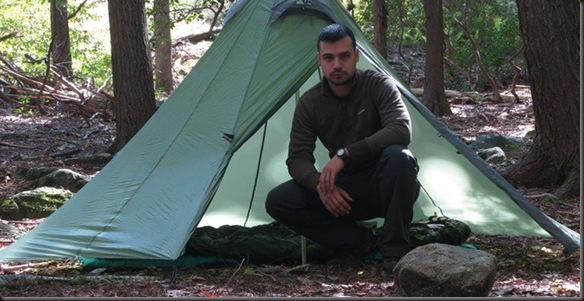
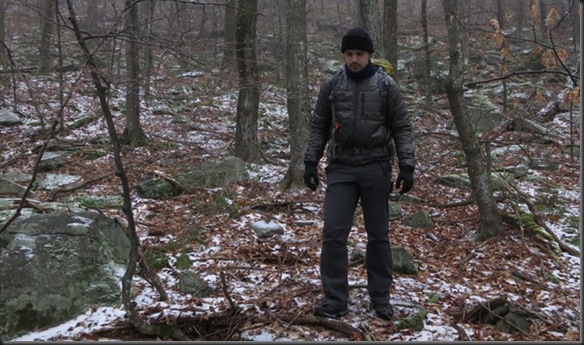
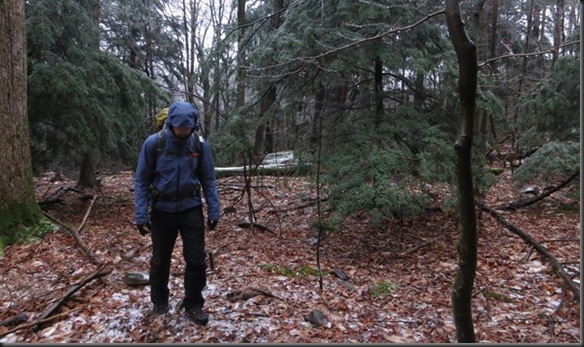
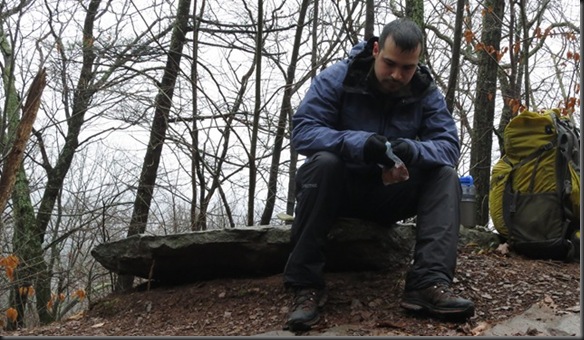
![006 - Copy[3] 006 - Copy[3]](http://lh6.ggpht.com/-vCVT9m9nGsw/UTUBkozyEgI/AAAAAAAAJPA/1TQbHql7Qrs/006Copy3_thumb1.jpg?imgmax=800)
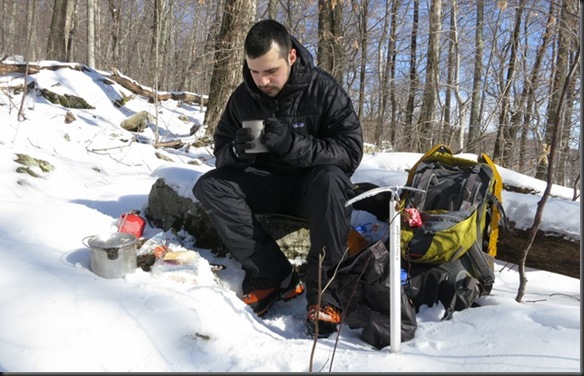
![238[3] 238[3]](http://lh3.ggpht.com/-QSOws00HRR4/UTUBnB1Zy5I/AAAAAAAAJPg/YAGkh5kQ6zc/2383_thumb1.jpg?imgmax=800)
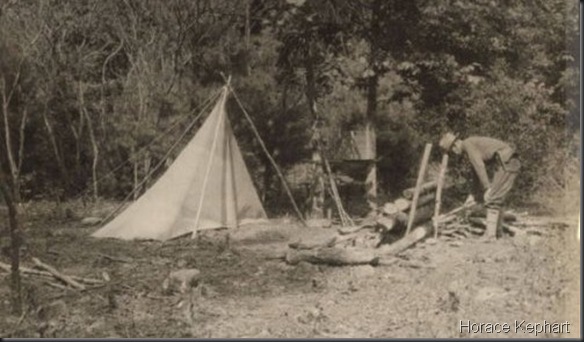
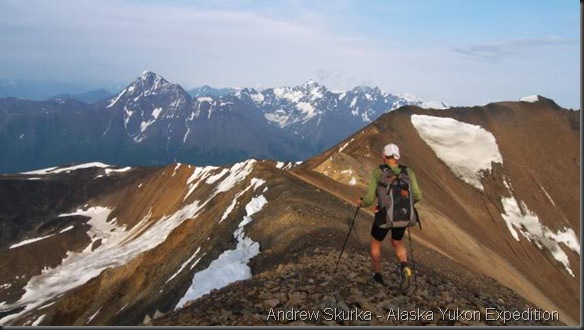
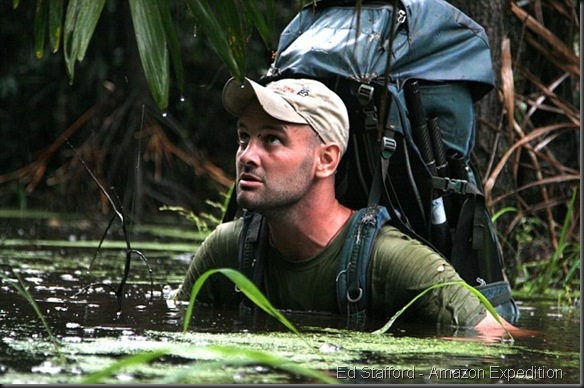
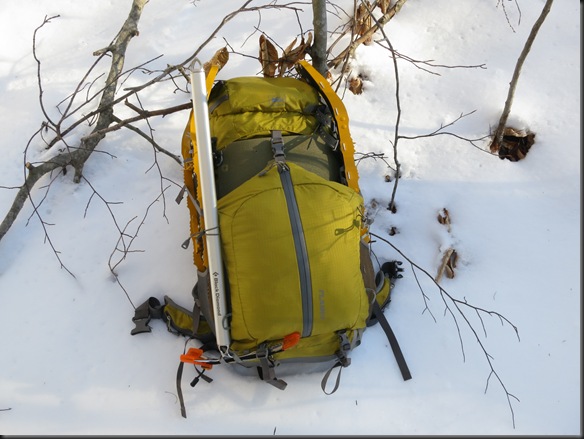
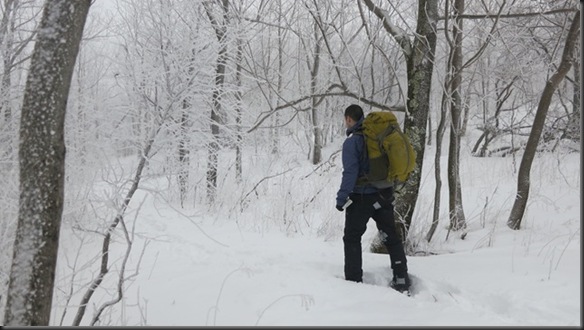

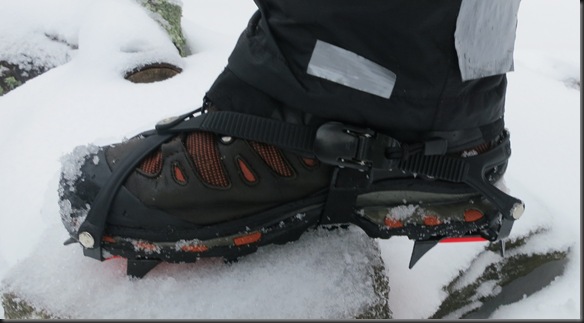
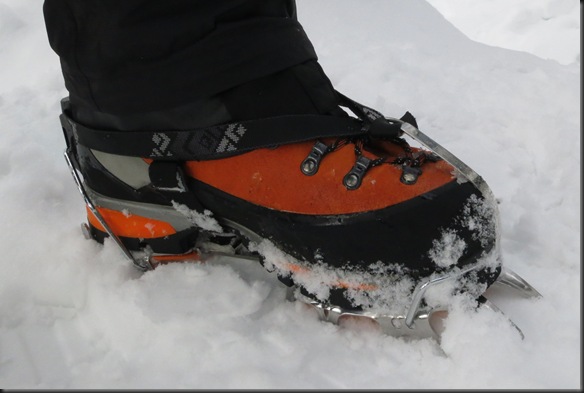
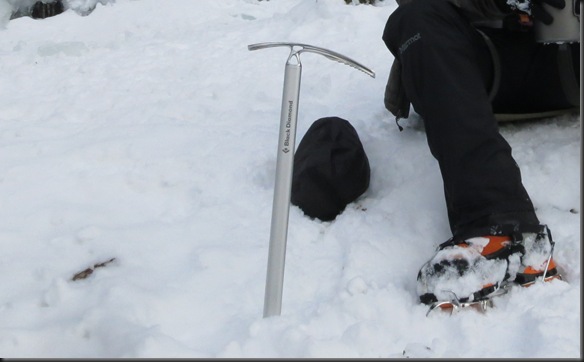
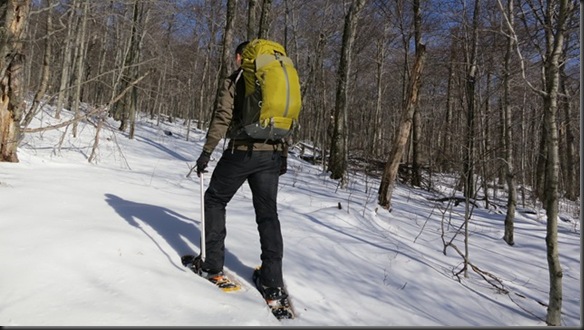
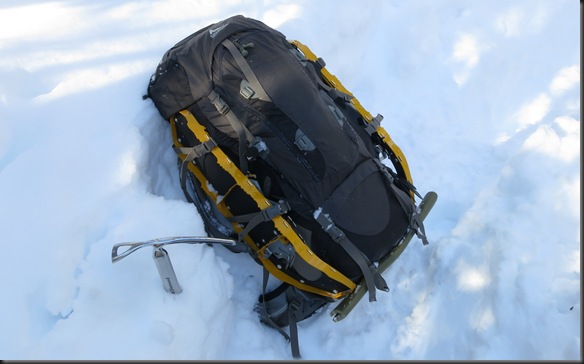
![305[3] 305[3]](http://lh4.ggpht.com/-ORzt-tyz6dI/UT3CnyBD8UI/AAAAAAAAJSw/X2eLDMLfPfo/3053_thumb1.jpg?imgmax=800)
